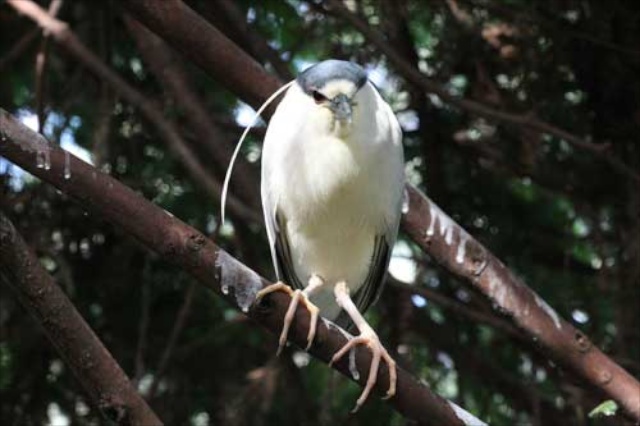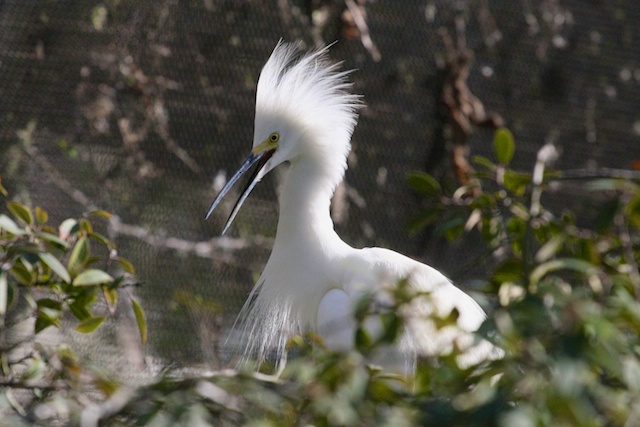As spring approaches, an egret and a heron have been hard at work preparing for their future brood...together. This will mark the sixth year that "Jabby," a snowy egret (Egretta thula), and "Lefty," a black-crowned night heron (Nycticorax nycticorax) have nested as a pair at CuriOdyssey (formerly Coyote Point Museum) in San Mateo.
At first glance, this is an "animal odd couple," however, there is nothing odd about it. CuriOdyssey specializes in taking in non-releasable animals from wildlife rehabilitation centers. These animals are deemed non-releaseable due to the extent of their injuries or because they habituated to humans during their recovery, greatly compromising their chances for survival in the wild. Because of this, CuriOdyssey's Walk-Through Aviary contains random numbers of male and female birds of various species.
Despite most of the birds being unmated, Jabby and Lefty have found a solution to this problem. Being the only individuals of their species and wanting to reproduce each spring, Jabby and Lefty have simply paired up!


The drive for them to reproduce each year is so strong, that it doesn't matter what sex or species they are. Both birds' instincts take over each spring, and courting, nest-building and egg-laying begin. This behavior between different species is not unusual in other aviaries with similar circumstances. Previously at the California Academy of Sciences, a female turquoise tanager (Tangara mexicana) and a female opal-rumped tanager (Tangara velia) nested together in the Rainforests of the World exhibit because they too, were the only individuals of their species.
Because Jabby and Lefty do not belong to the same genus, their eggs are not fertile. Animals that do belong to the same genus share more genetic material between them, increasing the chances of producing offspring together. Hybrid animals are a result of two parents from the same genus but are different species. A familiar example would be a horse and donkey hybrid- a mule. Offspring from two species, however, are almost always sterile because functioning sex cells in hybrids are rare.
